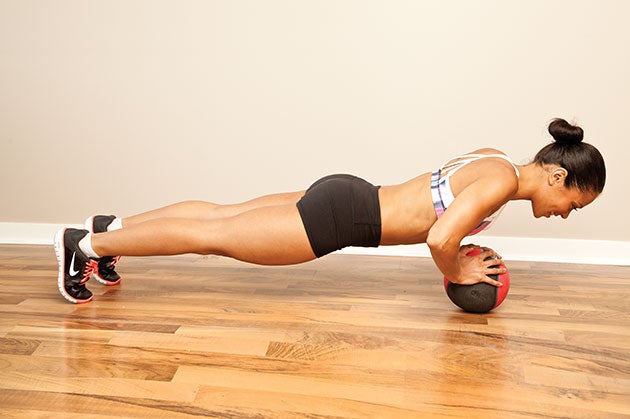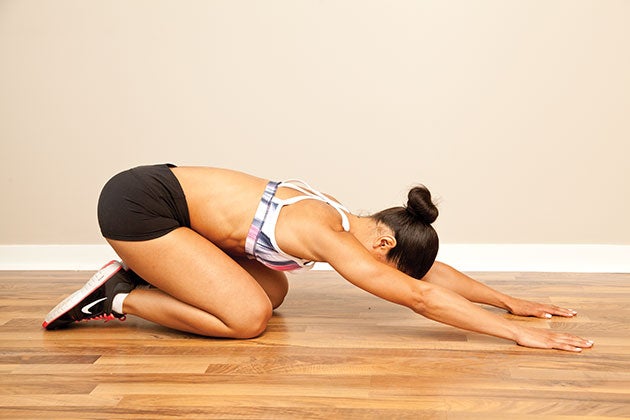Heading out the door? Read this article on the new Outside+ app available now on iOS devices for members! Download the app.
Remember when planking became an internet fad a few years back? People posted pics of themselves planking in strange locations all over the globe as some sort of trendy challenge. Sometimes they even got creative and used props, doing such moves as a ball plank. While they might have been doing it just for the social media attention, they most certainly reaped some unexpected benefits the more they practiced.
The Benefits Of Planking
If you’ve ever done a plank, even for 30 seconds, you’ll know that when it comes to a plank, muscles workedinclude, well, all of them! “Planks are one of the best exercises for your entire body,” says Jacqueline Kasen, a certified personal trainer by the National Federation of Professional Trainers and director of group fitness at Anatomy. “Every muscle is being engaged yet predominantly focused on your core. The body builds more core engagement, strength and stability throughout your entire body.”
Aside from being super-effective core exercises, planks also strengthen the lower back, glutes, shoulders, chestand upper back. Aside from the full-body workout benefits of planking, Kasen says planking is also great because:
- Anyone can plank. Unless you have a serious injury, most everyone is able to physically get into a plank — whether they’re a beginner or an elite athlete.
- Planking fosters creativity. With so many variations of planking, your mind will never get bored and your body can always be challenged. For instance, you can just use your bodyweight or add weight or resistance bands for more work.
- Almost any place is a good place to plank. Whether it’s at the gym, your home, a park or field, the beach or a hotel room, you can keep working on your plank. No special equipment is needed — unless you want to practice your ball plank— and almost any surface will work.
What’s The Proper Plank Position?
If there’s anything we learned from those crazy planking challenges, planking positions can be quite varied. For instance, there are high planks and side planks, but the most common variation is a low-plank position. But no matter which version you choose, it’s important to practice proper plank positionto avoid injury — especially before you graduate to a ball plank.
“For a proper low plank, place your elbows underneath your shoulders and your hands in a neutral position, shoulder-width apart,” Kasen says. “Your spine should be in a neutral position with your head aligned, as well and your pelvis tucked underneath to engage your lower abdominals and take stress off your lower back. Your feet can be together for a tougher workout, or to modify, the feet can be hip-width apart.”
Looking for a little more challenge or to hit a different area with your plank? Kasen says if you soften your knees, it will be tougher on your core. And if your legs are straight, it will be more of a stretch in your hip flexors. Feel free to play around with those adjustments, depending on your goal.
Doing A Ball Plank
Sure, you may have perfected your proper plank positionon a nice, stable surface like the ground — but don’t you think it’s time to kick things up a notch? Think of a ball plankas a progression from a bodyweight-only plank.
“Adding a ball, such as a medicine ball or stability ball, to your workout makes a bodyweight plank more challenging,” Kasen says. “It becomes more challenging because you are on an unstable surface, which requires more muscle engagement. Your body will need to work harder to stabilize.”
To do a proper ball plank, place your elbows on the ball for a low-plank position. (You can have your arms straight for a high-plank position.) Place the ball in between your elbows on the floor and squeeze the ball.
If you’re focused on a lower-body workout, switch up the placement and do a ball plankwith the ball under your feet instead of your hands. You also may place the ball on your hip in a side plank, with such variations as raising your top leg, pulling a resistance band or using a cable.
“Make sure your hips are even when adding another element of a plank,” Kasen says. “Otherwise, your body will deviate out of alignment and use other muscle groups to help assist in the movement when they aren’t supposed to be working. It’ll take away from your core and cause other bodyparts to be stressed.”

Muscles worked: Triceps, biceps, pectorals, core, legs and glutes
- Kneel on the floor and place both hands on top of a medicine ball in front of you with your index fingers and thumbs together. Make sure your hands are underneath your shoulders and are shoulder-width apart.
- Extend your legs straight behind you, supporting yourself on your toes. (If you are just starting out, stay on your knees.) Make sure your toes are straight. To make it even more challenging, place your feet together. If you need more stability, open your feet farther apart.
- Bend your arms to flare your elbows out to the sides, actively pressing down on the medicine ball, and hold for 30 seconds. Make sure to have your elbows at a 45-dgree angle so you focus more on your chest. They should be aligned to avoid putting negative stress on your rotator cuff. And always keep your eyes on the floor while you’re in the plank position.
- When complete, kneel and sink back into Child’s Pose. Repeat once or twice to build head-to-toe strength in a jiffy.
